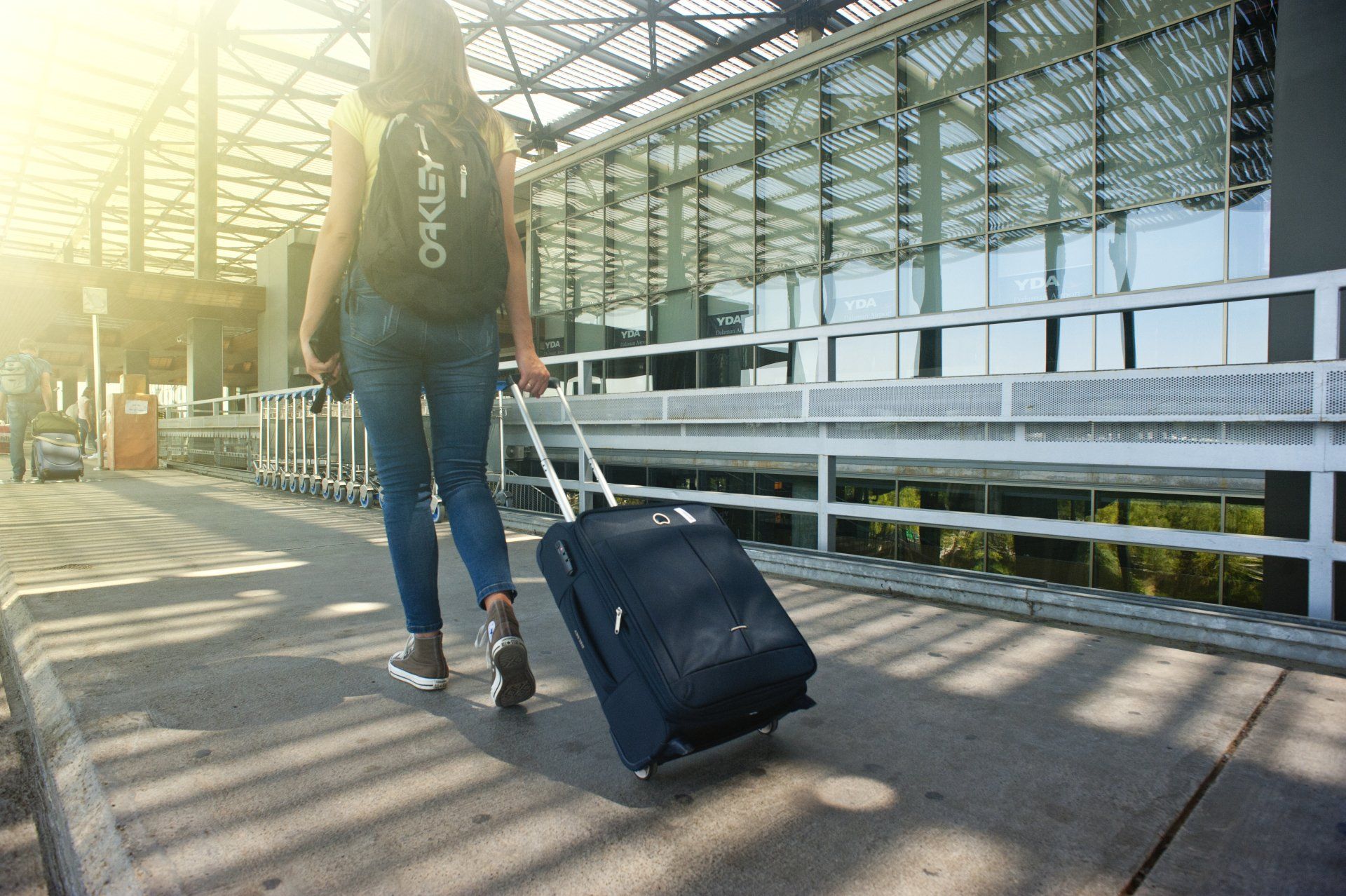Puis-je accélérer mon autorisation de voyage ?
Santos Lloyd Law Team • October 13, 2023
Click here to read this article in English
Nombre de nos clients nous demandent s'ils peuvent accélérer le traitement de leur autorisation de voyager à l'étranger. Ils veulent rendre visite à leur famille, partir en vacances ou s'occuper de leurs affaires personnelles. Lorsqu'une personne demande un ajustement ou un changement de statut aux États-Unis, elle ne peut quitter le pays qu'une fois son dossier traité, au risque de se voir refuser l'entrée aux États-Unis et d'abandonner la demande en cours.
Vous pouvez toujours quitter le pays pour voyager à l'étranger si vous en avez besoin. Cependant, le problème est de revenir aux États-Unis et les conséquences sur votre demande en cours.
Le terme technique pour "autorisation de voyager" est "liberté conditionnelle anticipée" (advance parole en anglais). Il s'agit d'un document de voyage permettant aux ressortissants étrangers de rentrer aux États-Unis après un voyage à l'étranger. Ces ressortissants étrangers ont généralement des demandes en cours pour des prestations d'immigration ou des changements de statut de non-citoyen. La libération conditionnelle anticipée s'obtient en remplissant une demande I-131 avant de quitter les États-Unis. Si vous ne le faites pas, vous risquez de vous voir refuser l'entrée dans le pays et de perdre toute demande en cours, ce qui n'est pas une bonne chose.
Ce que vous demandez en fin de compte, c'est de ne pas faire la queue. Étant donné que l'octroi d'une demande accélérée signifie que l'USCIS statuera sur votre demande avant les autres personnes qui ont déposé leur demande plus tôt, ils évaluent soigneusement l'urgence et le bien-fondé de chaque demande accélérée. Vous avez donc intérêt à avoir une bonne raison de ne pas faire la queue.
L'USCIS est très prudent lorsqu'il s'agit d'accéder à ces demandes, et celles-ci sont généralement rejetées. Vous devez savoir que lorsque vous demandez un ajustement ou un changement de statut à l'intérieur des États-Unis, vous serez bloqué dans le pays pour un avenir proche. C'est la règle.
Dans cette optique, l'USCIS peut envisager une demande accélérée si vous pouvez faire valoir et prouver les éléments suivants:
- Perte financière grave pour une entreprise ou une personne.
Une entreprise peut démontrer qu'elle subirait une perte financière grave si elle risque de faire faillite, de perdre un contrat important ou de devoir licencier d'autres employés. Supposons que vous puissiez prouver de manière claire et convaincante que tout votre service sera licencié si vous ne vous présentez pas à une réunion d'affaires au Brésil. D'un point de vue plus personnel, la perte d'un emploi peut suffire à établir une perte financière grave pour une personne, en fonction des circonstances individuelles. Dans le même ordre d'idées que la situation décrite ci-dessus, si l'incapacité de voyager pour le travail vous fait perdre votre emploi, cela peut justifier un traitement accéléré. J'ai bien dit "pourrait le justifier". N'oubliez pas que vous devez étayer tous vos arguments par des documents légitimes. Ainsi, il ne suffit pas de dire à l'USCIS que votre entreprise vous licenciera si vous n'assistez pas à une réunion. Vous aurez besoin d'un document de votre employeur pour étayer votre argument, qui explique clairement que votre emploi est menacé. - Urgences et raisons humanitaires urgentes
Les raisons humanitaires sont celles qui sont liées au bien-être humain. La définition de l'urgence peut varier d'une personne à l'autre. Les exemples classiques d'une "véritable urgence" sont une maladie grave, un handicap ou un besoin impérieux de voyager pour obtenir un traitement médical à l'étranger dans un laps de temps limité. Là encore, il doit s'agir d'une situation grave. Votre désir de voyager pour rendre visite à votre famille ou pour prendre des vacances nécessaires et "urgentes" ne répond pas à la définition d'une urgence.
Si vous devez voyager à l'étranger pendant que votre dossier I-131 dûment rempli est en cours, et que vous risquez de subir de graves pertes financières ou que vous avez une urgence, n'hésitez pas à nous contacter, et nous serons heureux de vous aider.
Ce blog n'est pas destiné à fournir des conseils juridiques et rien ici ne doit être interprété comme établissant une relation avocat-client. Veuillez prendre rendez-vous avec un avocat spécialisé en droit de l'immigration avant d'agir sur la base de toute information lue ici.
This Facebook widget is no longer supported.
Similar Posts

Advance parole is a travel document that permits you to travel outside the United States for temporary travel and return to the United States . Applicants for advance parole need to file Form I-131, Application for Travel Document with U.S. Citizenship and Immigration Services (USCIS) and pay the filing fee. When the application is approved, USCIS issues the applicant a Form I-512L, the advance parole document. The document must be presented to immigration officials to seek admission into the United States after traveling abroad. There are several ways a person can qualify for and obtain advance parole. Applicants for adjustment of status, DACA recipients, and individuals who need to travel for urgent humanitarian reasons are three common types of applicants that can apply for advance parole , however there are more. Applicants for adjustment of status can apply for advance parole when they file their green card application or when the green card application is pending. Adjustment of status applicants must obtain advance parole before traveling outside the United States to avoid an issue with the green card application. Obtaining advance parole through an adjustment of status application does not require an emergency or humanitarian purpose for travel. Note, when you file for advance parole through an adjustment of status application the filing fee for Form I-131 is not required. DACA recipients may also apply for advance parole to travel abroad for humanitarian reasons or for employment or educational purposes only. Humanitarian reasons include medical attention or treatment, visiting a sick relative or for a relative’s funeral services. Educational purposes include studying abroad, academic research and more. Employment purposes include work, training, meetings, interviews, and other specific work assignments. Certain individuals may also apply for advance parole due to an urgent humanitarian reason or to further a significant public benefit. To show that the travel is due to humanitarian, education, or employment reasons, the applicant must provide proof of such to USCIS. As mentioned, these are the three most common ways to obtain advance parole, but they are not the only ways. If you have questions about other ways to obtain advance parole, if you think you qualify for advance parole or have questions about your eligibility, please schedule a consultation with one of our experienced attorneys and we will be more than happy to assist you.

Many of our clients ask if they can expedite the processing of their authorization to travel abroad. They want to visit their families, go on vacation, or care for personal affairs. When someone applies for an adjustment or change of status in the United States, the person can only leave the country once the case is adjudicated, risking being denied entry into the United States and giving up the pending application.

Once you have connected with a college program, have been admitted to the school, and deemed eligible to compete athletically, you will need to secure an F-1 student visa in order to actually attend your new college and begin your time as a student athlete. The first step in the visa process is to receive your Form I-2

For many talented athletes around the world, U.S. college athletics represent a remarkable opportunity to combine elite athletic competition with higher education. In sports such as basketball, soccer, track and field, and tennis, among others, hundreds of colleges and universities across the United States offer struct

Under the new regulation, if a person filed or files Form I-589, Application for Asylum and for Withholding of Removal after October 1, 2024, and the application remains pending with USCIS for 365 days, the applicant must pay an Annual Asylum Fee (AAF) on the one-year anniversary of his or her filing date.



